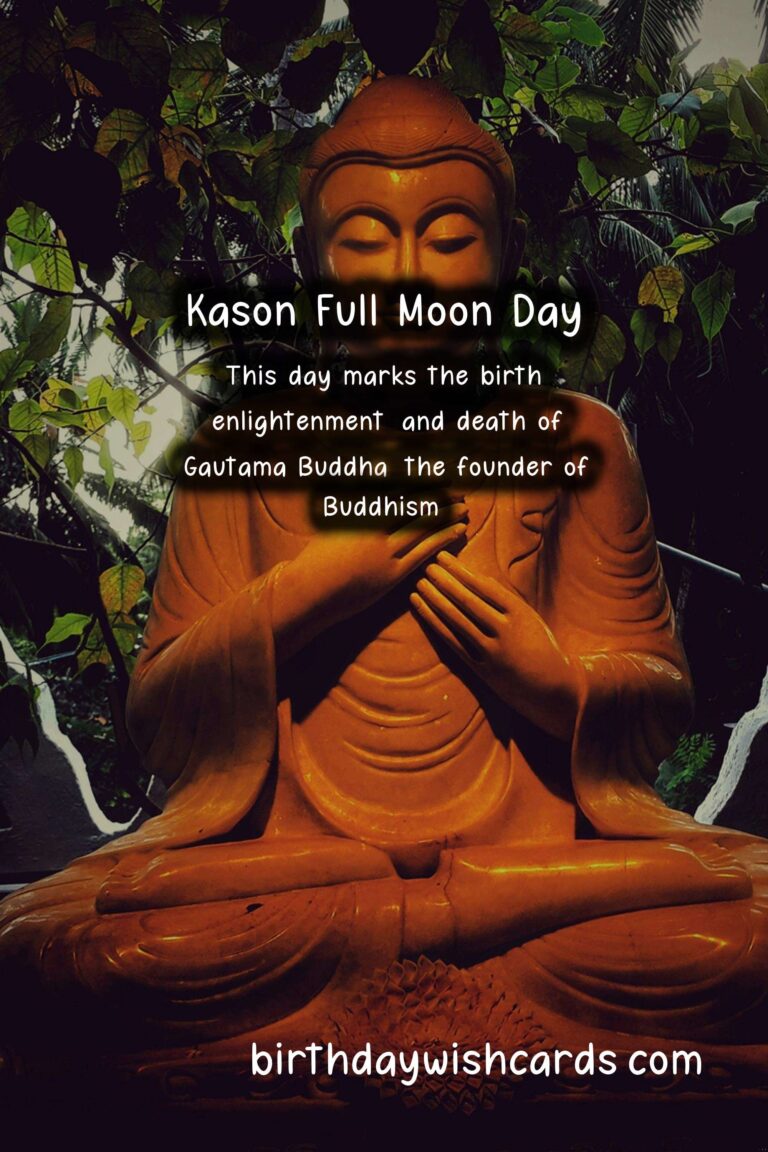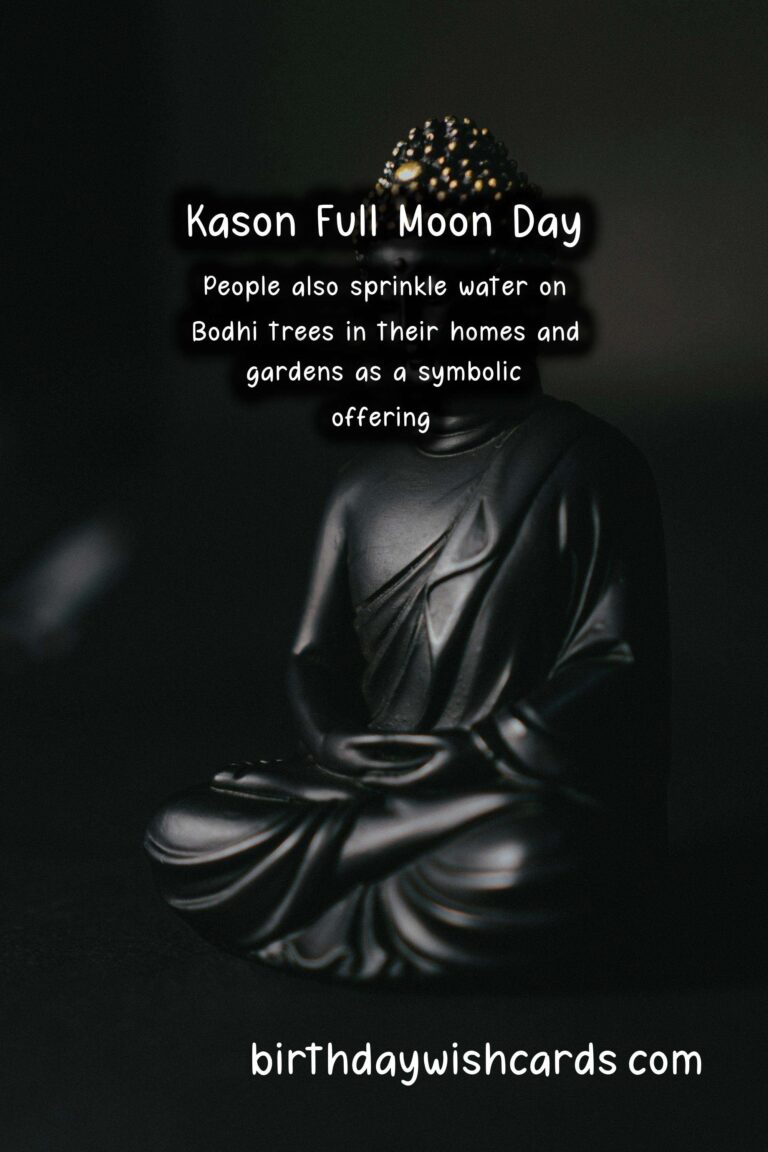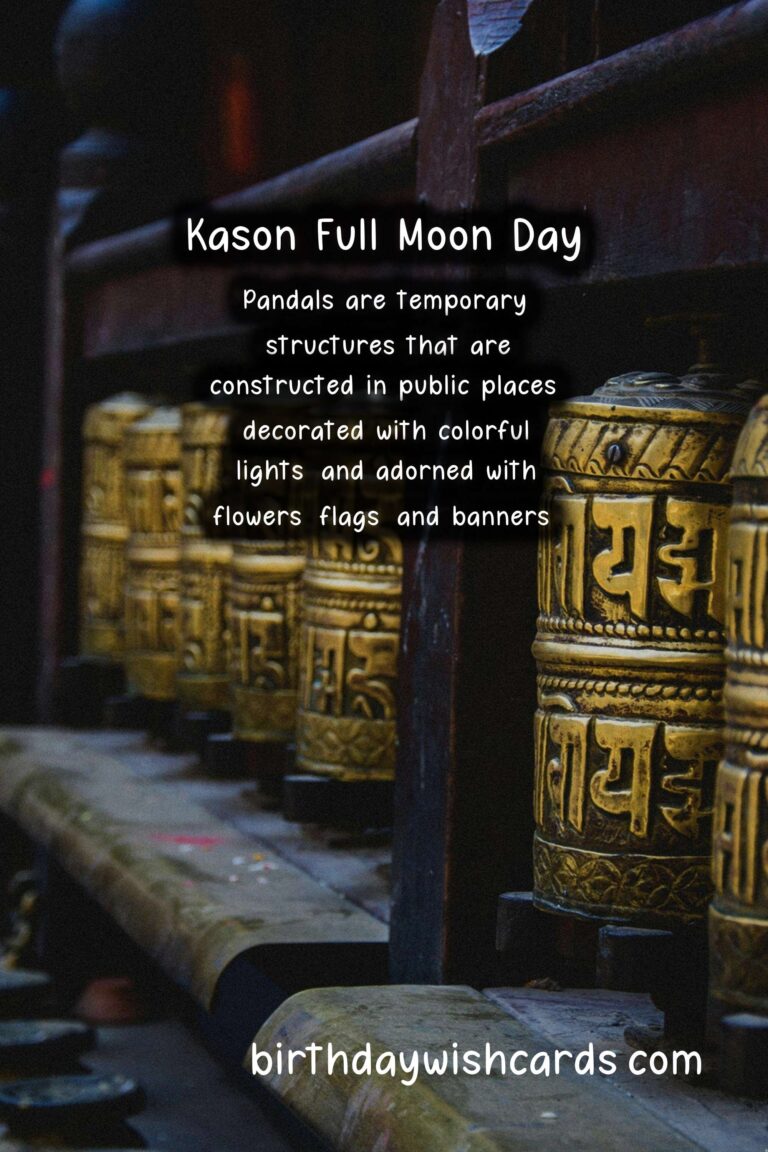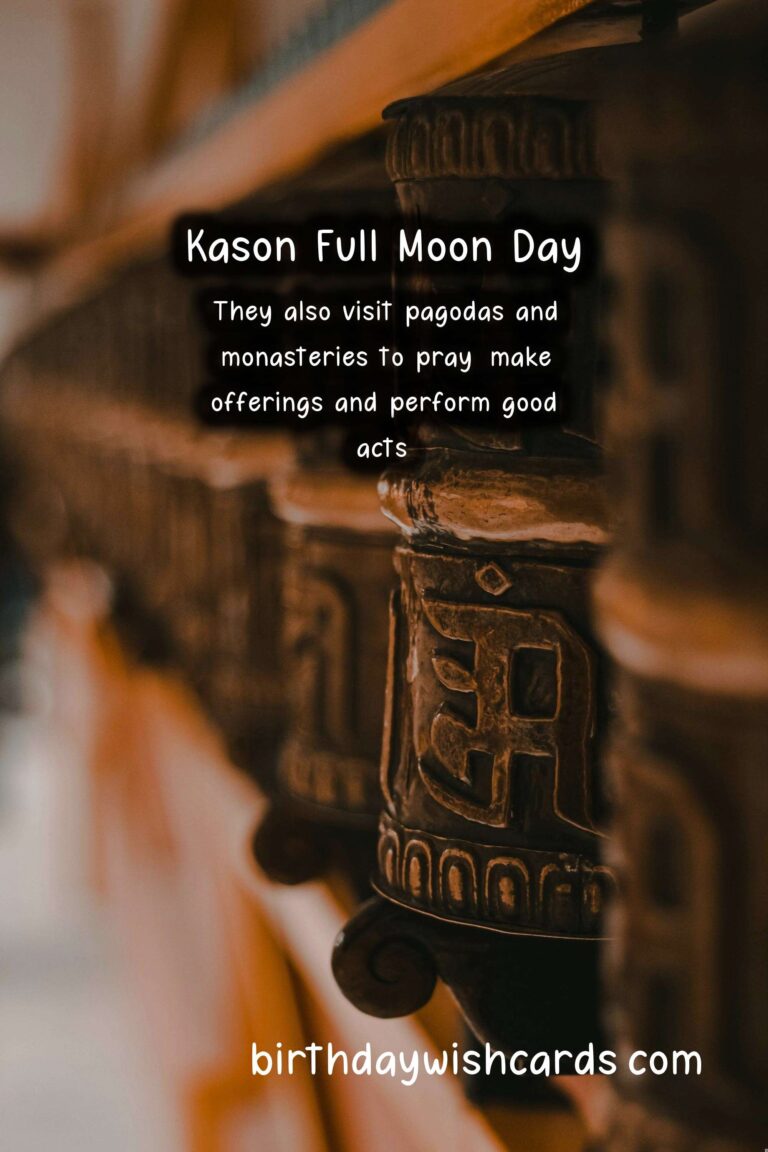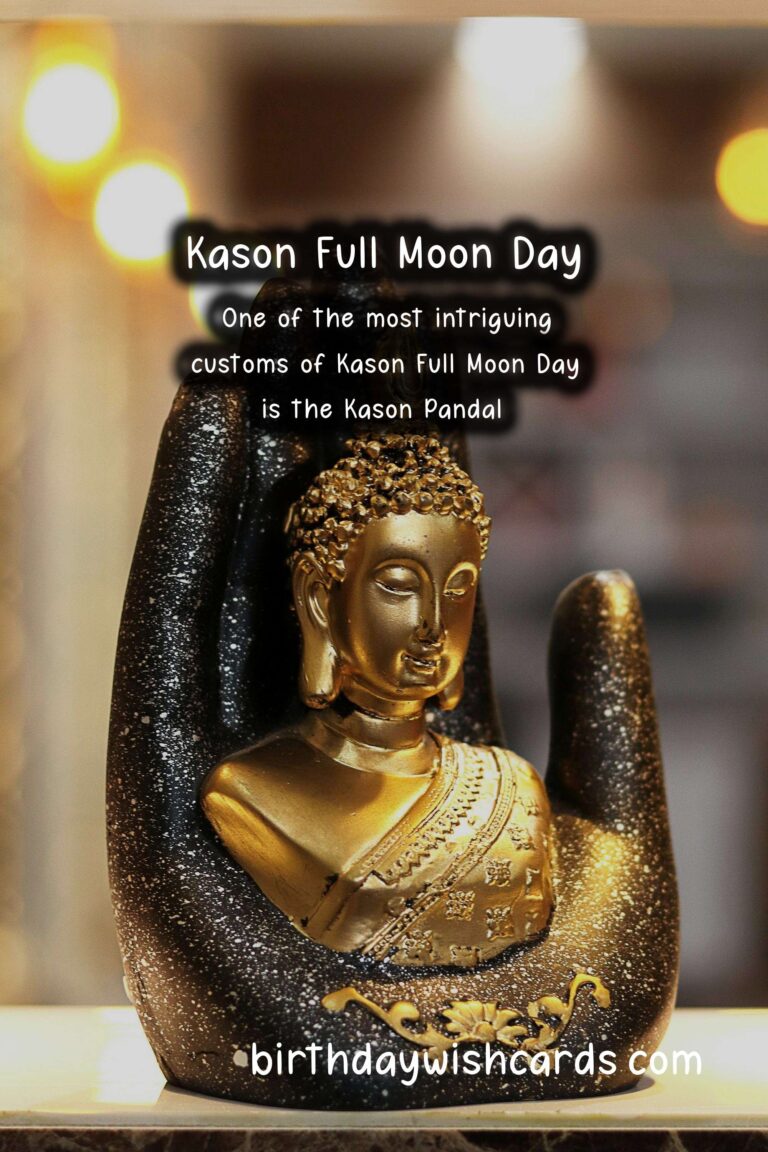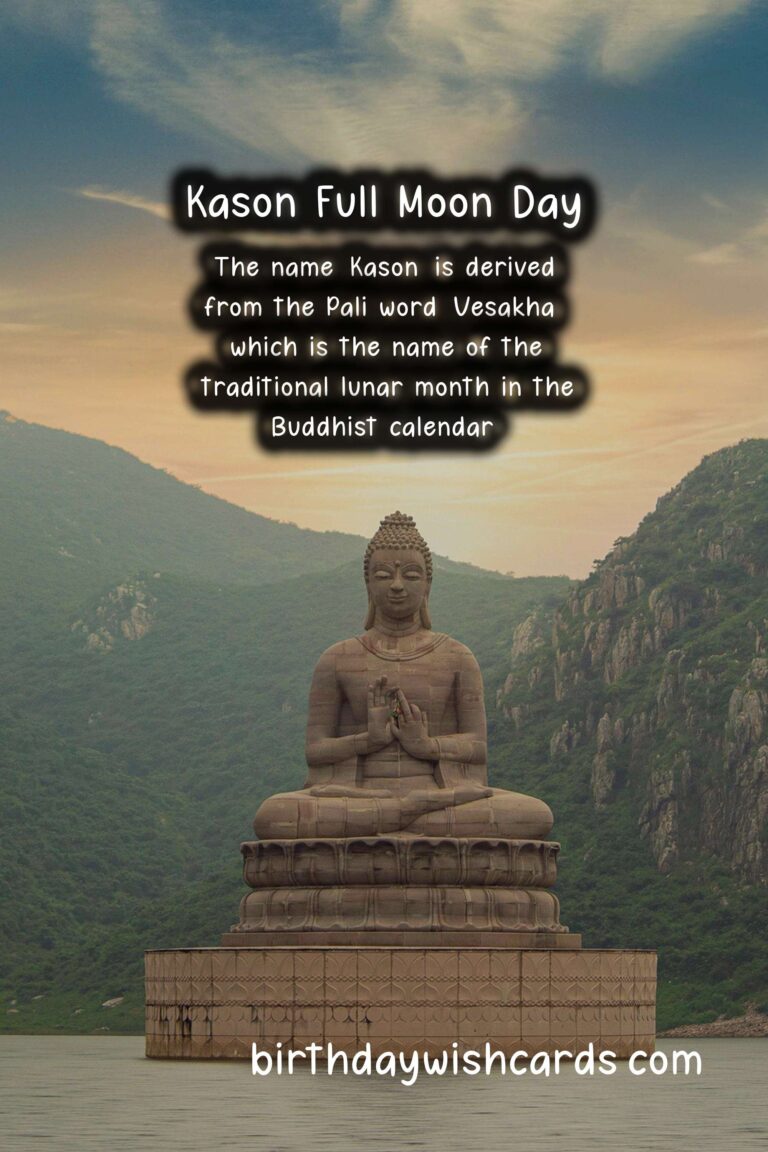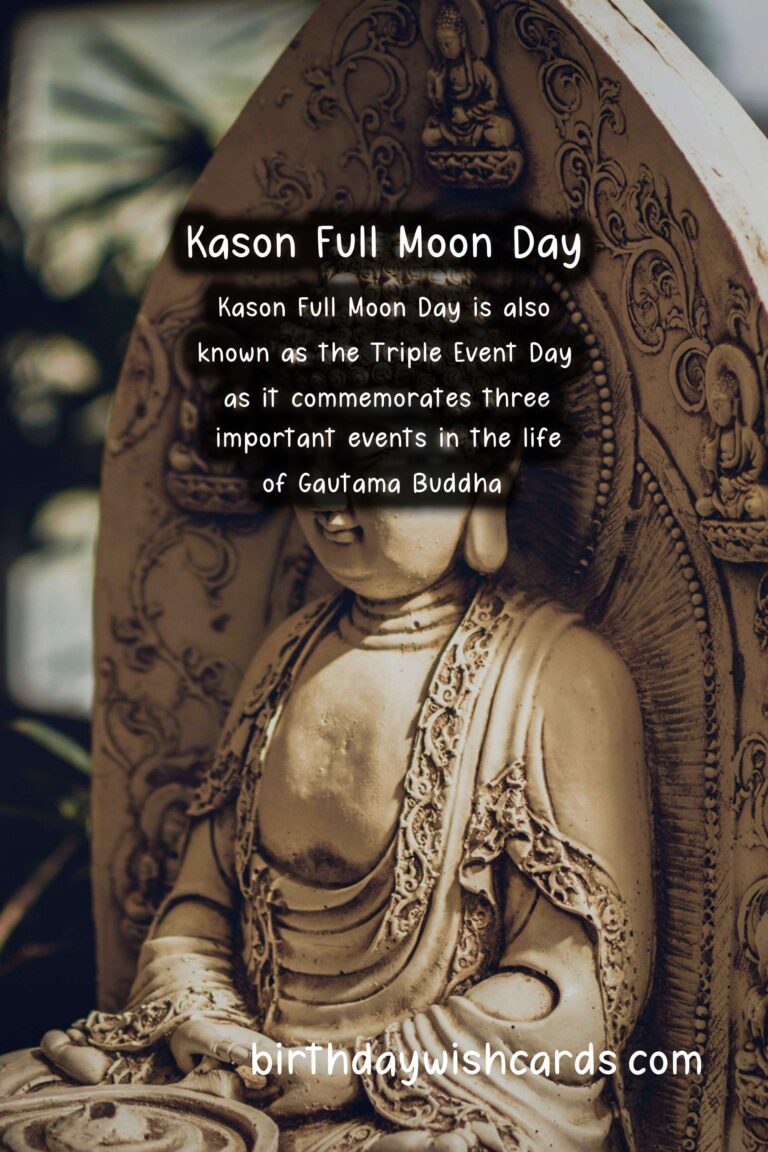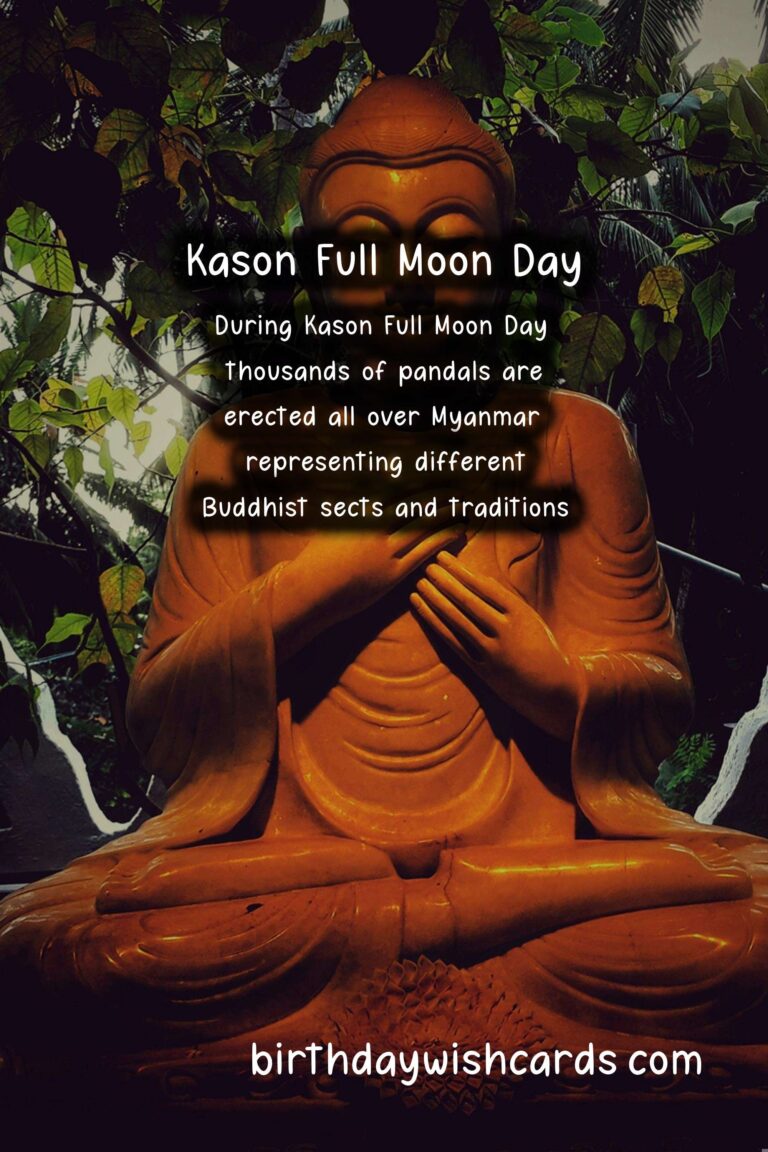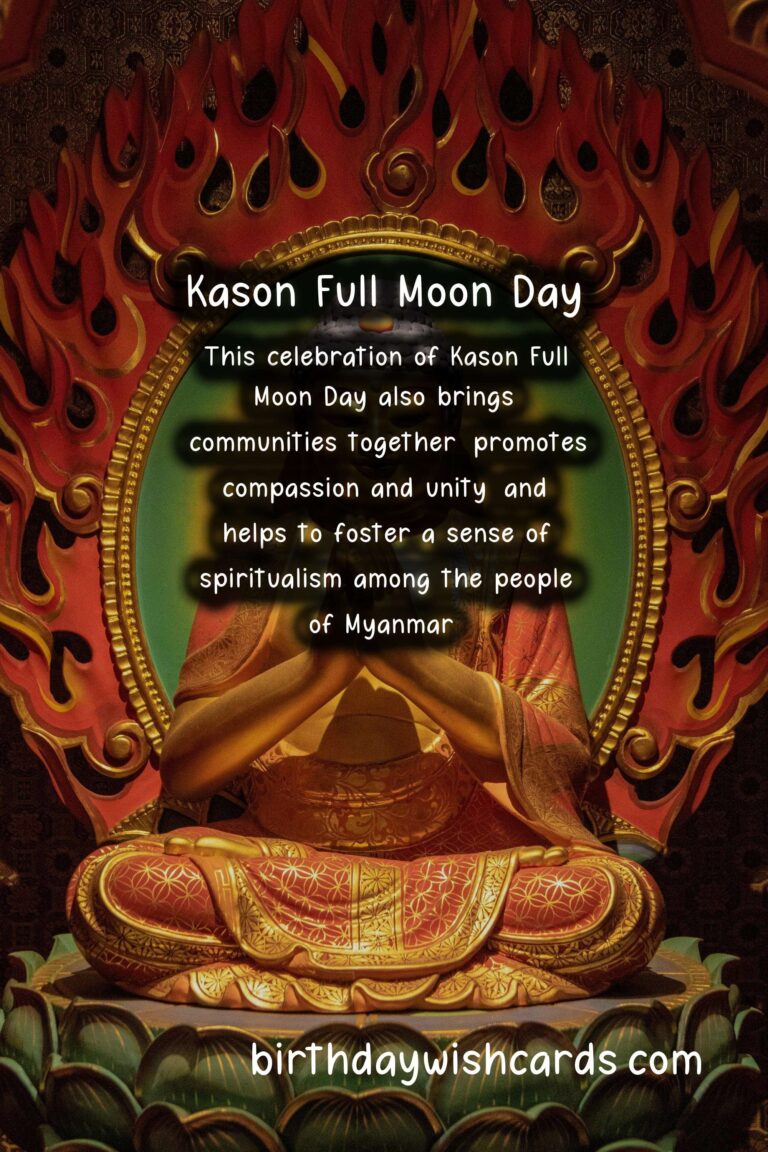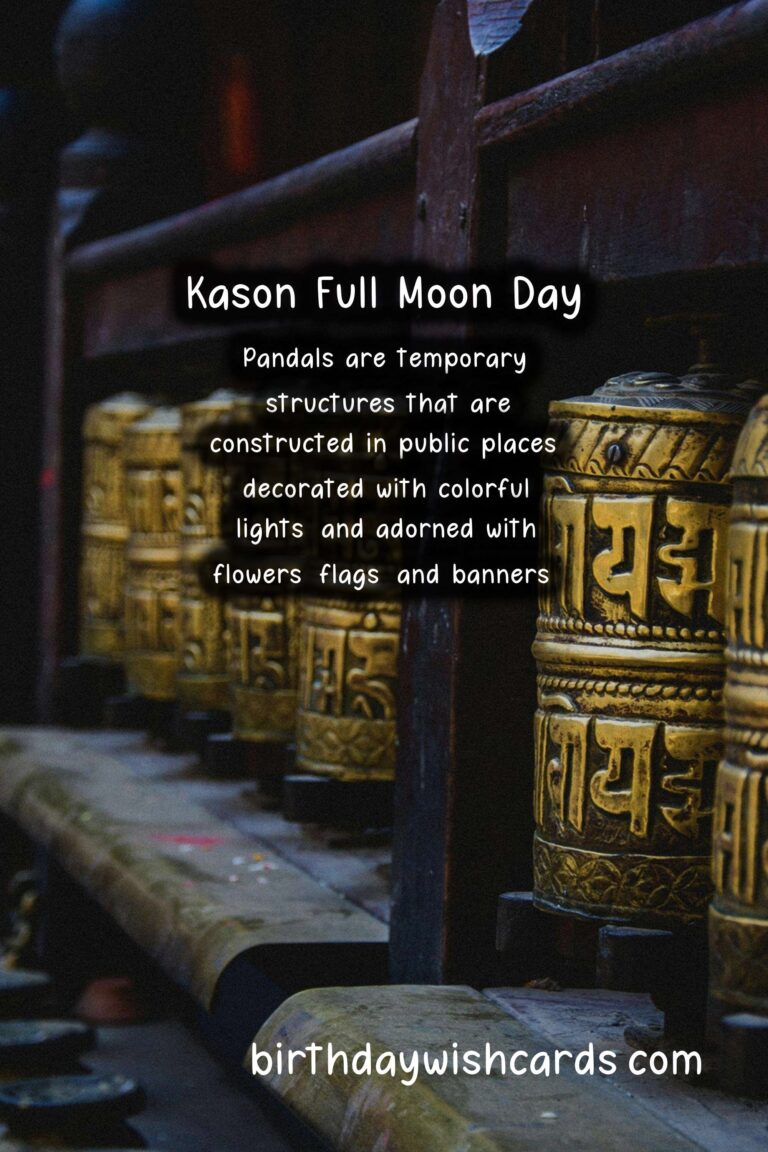
Kason Full Moon Day, also known as Kason Sasana Day or Vesak Day, is an important Buddhist holiday celebrated on the full moon day of the month of Kason (May) in Myanmar. This day marks the birth, enlightenment, and death of Gautama Buddha, the founder of Buddhism.
The name ‘Kason’ is derived from the Pali word ‘Vesakha’, which is the name of the traditional lunar month in the Buddhist calendar. This month is considered to be the most sacred month for Buddhists as it commemorates the most significant events in the life of Gautama Buddha.
Origins of Kason Full Moon Day
The origins of Kason Full Moon Day can be traced back to over 2,500 years ago, to the time of Gautama Buddha. According to Buddhist tradition, Gautama Buddha was born on the full moon day of Kason, attained enlightenment on the same day at the age of 35, and finally, passed away at the age of 80 on the same day.
Kason Full Moon Day is also known as the Triple Event Day, as it commemorates three important events in the life of Gautama Buddha. These events are known as the ‘Triple Event’ because they all occurred on the same day, the full moon day of Kason.
Celebrations and Customs
Kason Full Moon Day is celebrated with great fervor and enthusiasm all over Myanmar. Buddhists across the country perform religious ceremonies and offer alms to monks. They also visit pagodas and monasteries to pray, make offerings and perform good acts.
One of the most significant rituals on Kason Full Moon Day is the pouring of water on the sacred Bo Tree, which is believed to be the original tree under which Gautama Buddha attained enlightenment. People also sprinkle water on Bodhi trees in their homes and gardens as a symbolic offering.
Kason Pandals
One of the most intriguing customs of Kason Full Moon Day is the Kason Pandal. Pandals are temporary structures that are constructed in public places, decorated with colorful lights, and adorned with flowers, flags, and banners. These pandals are used as a platform for public merit-making and for displaying Buddhist relics and artifacts.
During Kason Full Moon Day, thousands of pandals are erected all over Myanmar, representing different Buddhist sects and traditions. People from all walks of life come together at these pandals to offer prayers, admire the decorations, and make offerings to the pagodas.
Significance of Kason Full Moon Day
Kason Full Moon Day is not only a celebration of the most significant events in the life of Gautama Buddha, but it also serves as an important reminder for people to lead a righteous and virtuous life. It is believed that by performing good deeds, making offerings to the monks, and following the teachings of the Buddha, one can achieve peace and happiness in this life and the afterlife.
This celebration of Kason Full Moon Day also brings communities together, promotes compassion and unity, and helps to foster a sense of spiritualism among the people of Myanmar.
Kason Full Moon Day, also known as Kason Sasana Day or Vesak Day, is an important Buddhist holiday celebrated on the full moon day of the month of Kason (May) in Myanmar. This day marks the birth, enlightenment, and death of Gautama Buddha, the founder of Buddhism. The name ‘Kason’ is derived from the Pali word ‘Vesakha’, which is the name of the traditional lunar month in the Buddhist calendar. This month is considered to be the most sacred month for Buddhists as it commemorates the most significant events in the life of Gautama Buddha. The origins of Kason Full Moon Day can be traced back to over 2,500 years ago, to the time of Gautama Buddha. According to Buddhist tradition, Gautama Buddha was born on the full moon day of Kason, attained enlightenment on the same day at the age of 35, and finally, passed away at the age of 80 on the same day. Kason Full Moon Day is also known as the Triple Event Day, as it commemorates three important events in the life of Gautama Buddha. Kason Full Moon Day is celebrated with great fervor and enthusiasm all over Myanmar. Buddhists across the country perform religious ceremonies and offer alms to monks. They also visit pagodas and monasteries to pray, make offerings and perform good acts. One of the most significant rituals on Kason Full Moon Day is the pouring of water on the sacred Bo Tree, which is believed to be the original tree under which Gautama Buddha attained enlightenment. People also sprinkle water on Bodhi trees in their homes and gardens as a symbolic offering. One of the most intriguing customs of Kason Full Moon Day is the Kason Pandal. Pandals are temporary structures that are constructed in public places, decorated with colorful lights, and adorned with flowers, flags, and banners. During Kason Full Moon Day, thousands of pandals are erected all over Myanmar, representing different Buddhist sects and traditions. Kason Full Moon Day is not only a celebration of the most significant events in the life of Gautama Buddha, but it also serves as an important reminder for people to lead a righteous and virtuous life. It is believed that by performing good deeds, making offerings to the monks, and following the teachings of the Buddha, one can achieve peace and happiness in this life and the afterlife. This celebration of Kason Full Moon Day also brings communities together, promotes compassion and unity, and helps to foster a sense of spiritualism among the people of Myanmar. 
